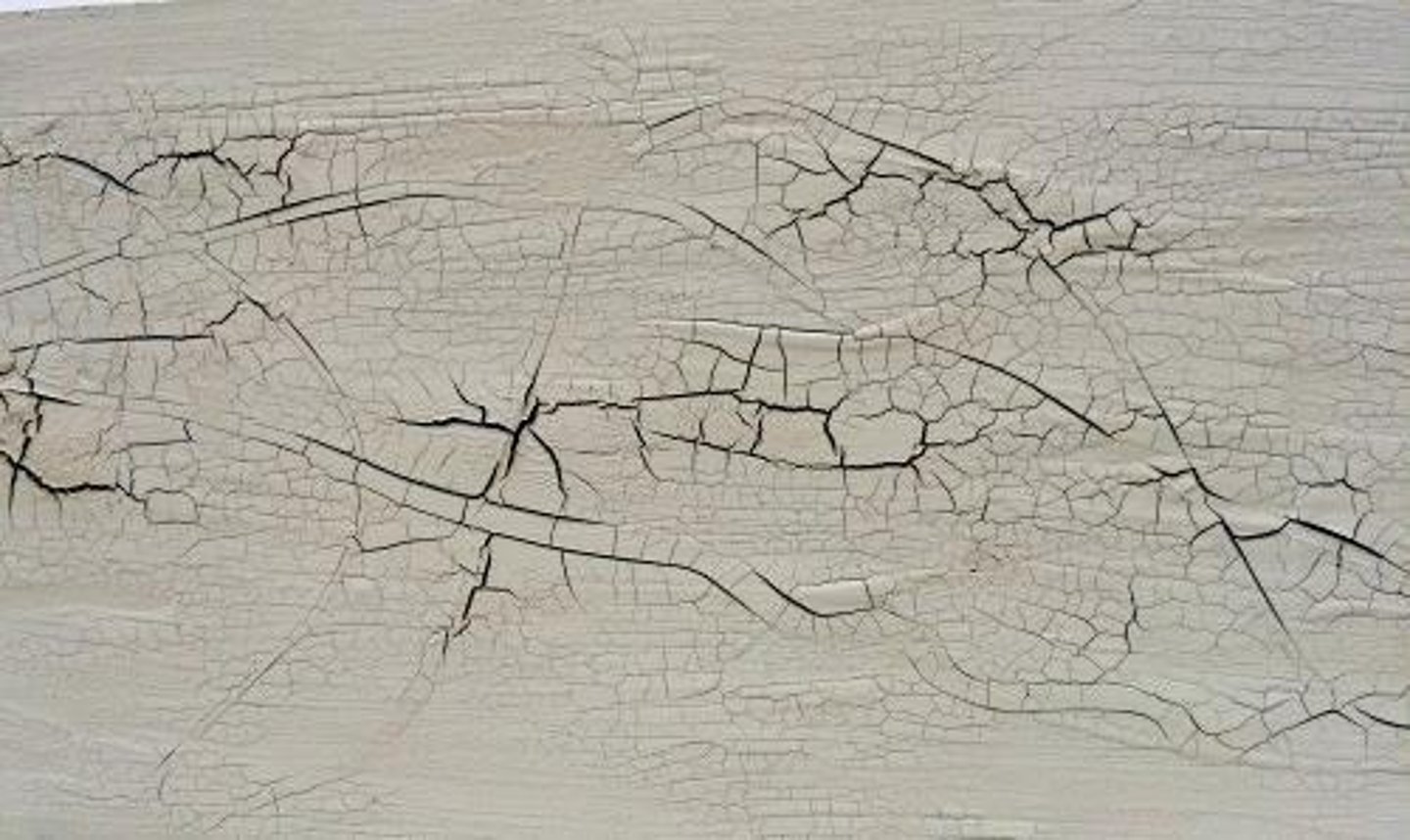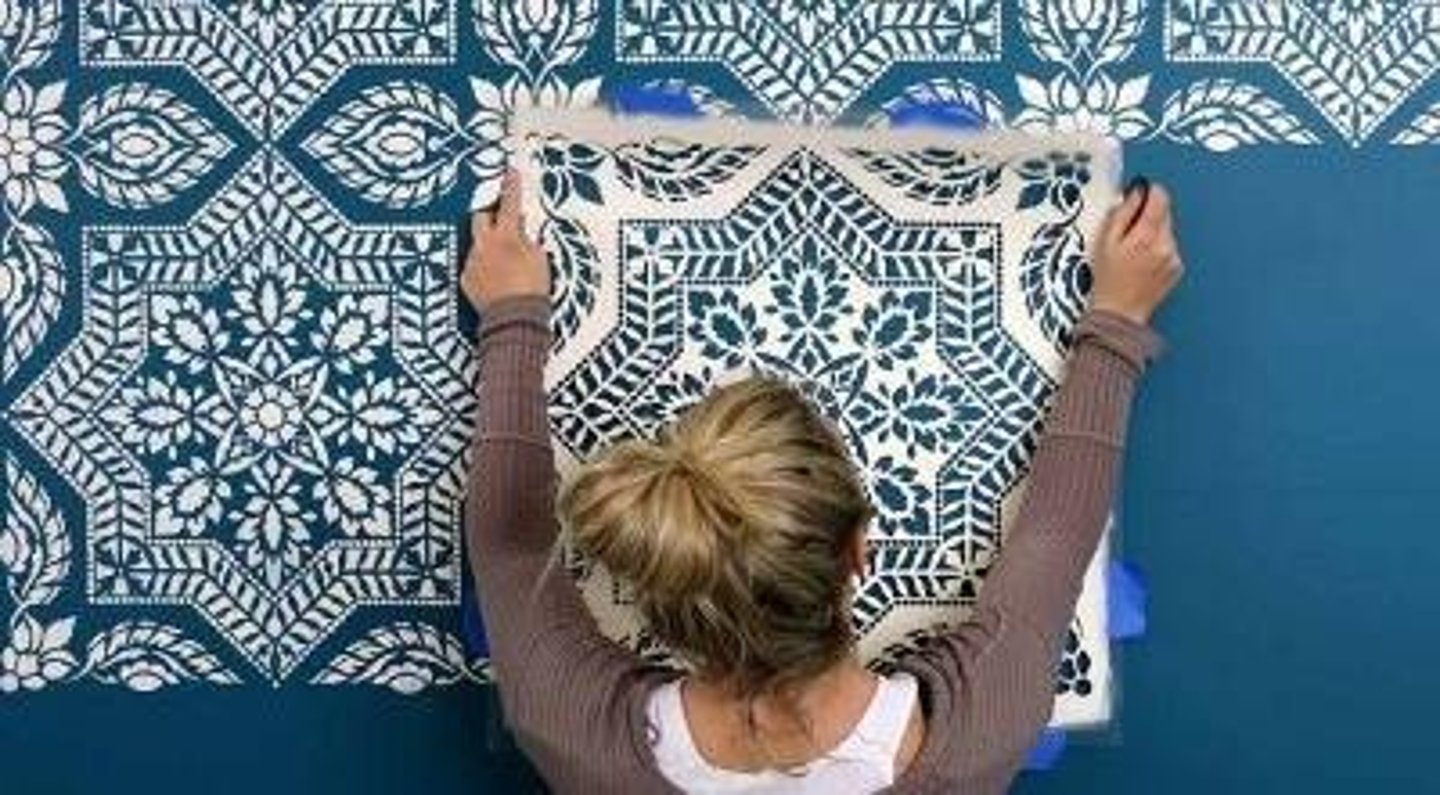Understanding Paint, Finishes, and Metal Materials
1/419
There's no tags or description
Looks like no tags are added yet.
Name | Mastery | Learn | Test | Matching | Spaced |
|---|
No study sessions yet.
420 Terms
Paint
A mixture of a solid pigment suspended in a liquid vehicle and applied as a thin, usually opaque coating to a surface for protection and decoration.
Pigments
Gives paint its color.
Vehicles
A nonvolatile fluid in which the solid body material is suspended.
Thinners
Volatile solvents that cause the paint to flow better.
Additives
Includes driers, anti-skinning agents, wetting agents and preservatives.
Driers
Reduce the time for evaporation and oxidation.
Anti-skinning agents
Prevents a skin from forming on the surface of the paint in the can.
Wetting agents
Helps distribute pigment particles evenly.
Preservatives
Retard or eliminate the growth of mold or bacteria.
Latex Paints
Paints with water-based thinners (also called emulsion paints) that dry and harden through evaporation, do not peel when the substrate is not entirely dry when painted, produce fewer odors when drying, and clean up easily with water.
Enamel Paints
Also called oil-based or alkyd paints, used with solvent thinners and mineral spirits that dry by both evaporation and oxidation, produce more odor and emit more VOCs.
Sheen or Gloss
Refers to the amount of light reflected from a paint surface and depends on the size of the particles of pigments and the ratio of pigment to liquid.
Flat
No sheen; conceals minor imperfections, suitable for ceilings and walls in low-use rooms.
Eggshell
Smooth finish with a subtle sheen; scrubbable, suitable for family rooms or bedrooms.
Satin
All-purpose, popular sheen; washable and scrubbable, suitable for almost any room.
Semi-Gloss
Medium sheen; extremely durable, washable and scrubbable, suitable for high-abuse areas.
Gloss
High sheen; shows imperfections, suitable for doors, trims, and cabinets.
Paint Systems
Paint products are applied in a series of coats, commonly a three-coat system consisting of primer and two topcoats.
Primers
Serve to bind substrate.
Sealers
Specialty primers used to limit the absorbency of the substrate or to limit imperfections from showing through.
Fillers
Applied prior to painting to provide a very smooth surface for painting.
Colorwash
A decorative paint finish technique.
Combing
A decorative paint finish technique.
Crackle-Glaze
Imitates old peeling paint and provides a cobweb look.

Rubbing
A decorative paint finish technique.
Antiquing
The process of artificially aging paint.
Distressing
A decorative paint finish technique.
Sponging
A decorative paint finish technique.
Dragging
A decorative paint finish technique.
Spattering
A decorative paint finish technique.
Stamping
A decorative paint finish technique.
Stippling
A decorative paint finish technique.
Faux Finish
A decorative paint finish technique.
Ragging
A decorative paint finish technique.
Stenciling
A decorative paint finish technique.

Steel Wool Technique
Using steel wool and rubbing off the new paint to create a patchy worn look.
Stencil Plate
A stencil must be strong and robust as the designs often entail a great deal of repetition.
Faux Finishes
A form of imitating existing finishes onto our existing substrate, such as tortoise shelling, marbling, and graining.
Verdi Gris
The color that copper and bronze turn with age and unprotected exposure to the elements; a blue green shade replicated in a paint effect.
Graining
The art of imitating natural timber graining, achieved by using a brush or comb to pull through a translucent glaze applied over a base coat.
Marbling
The imitation of the natural product of marble, achieved by painting on veins of various shades and applying varnish to seal it.
Tortoise Shelling
The art of imitating tortoise shell, achieved by working with wet varnish and adding desired colors to create markings.
Bambooing
The imitation of bamboo, achieved by painting turned or carved wood to copy bamboo knots and grain.
Alligatoring
An incomplete form of peeling where the paint cracks into large segments, with edges breaking away from the surface while the center remains attached.
Bleeding
Discoloration of a coating caused by soluble color in the underlying surface.
Blistering
Formation of blisters on a coating due to dust, grease, sap, moisture, excessive heat, or direct exposure to the sun during drying.
Blushing
Cloudiness on the surface finish caused by poor or improper drying conditions.
Checking
Defect in paint film wherein short narrow cracks or small squares resembling a checkboard are formed.
Paint Defects
Various issues that can occur in paint applications, affecting the appearance and durability of the finish.
Definition of Paint
A substance used to create a protective or decorative coating on surfaces.
Paint Computation
The process of calculating the amount of paint needed for a project.
Ingredients of Paint
The components that make up paint, including pigments, binders, solvents, and additives.
Classification of Paint
The categorization of paint based on its properties, uses, and formulations.
Paint Application
The methods and techniques used to apply paint to surfaces.
Solution for Alligatoring
Remove all loose paint, sand the surface smooth, powerwash, and repaint according to instructions.
Solution for Bleeding
Lightly sand the affected area, re-prime, and paint, allowing to dry completely before additional coats.
Solution for Blistering
Find and remove the source of moisture, remove all blisters, sand, and repaint according to directions.
Solution for Blushing
Lightly spray a mist of lacquer thinner or retarder over the blushing area and let it sit to see if it clears up.
Condition of Blushing
A milky white haze that appears on the paint film.
Solution for Checking
Remove all loose paint, powerwash, sand edges, and rinse again to remove debris and dust.
Cracking/ Crazing
the formation of cracks on a surface coated with varnish or enamel caused by lack of elasticity in the film
Flaking
paint defect in which the film breaks into small pieces and fall off
Grinning
a condition in which the base or undercoat shows through the finishing paint film
Orange Peel
wherein the paint resembles the peel of an orange
Pinholing
formation of tiny holes in the paint film, very similar to pinholes, caused by changes in atmospheric conditions during drying, by application over sweating or incompletely dried undercoats, or by spots or grease or sap in the underlying surface.
Runs / Sags
irregularities on the surface finish due to uneven paint flow during application
Tackiness
characterized by stickiness of film when it is supposed to be tack-free. May be due to application on very greasy or unclean surface esp. in the refinishing work
Washing
a condition wherein the paint on the surface gets washed down by the rain or chemicals
Wrinkling
the appearance of wrinkles on the coating due to application in thick coats, or to cold weather
Ferrous Metals
Metals that are made wholly or partly of iron.
Non-Ferrous Metals
Metals that do not contain significant amounts of iron.
Noble Metals
Metals that resist oxidation when heated in air and are not easily dissolved by inorganic acids, including gold and platinum, followed by titanium, silver and stainless steel.
Metal
A pure substance, composed of a single type of atom.
Alloy
A mixture of two or more elements, at least one of which is a metal, often created to improve the properties of a metal.
Corrosion
the gradual deterioration of metal by chemical action, usually takes place when metal is exposed to weather, moisture or specific corroding agents.
Oxide
a combination of oxygen with another element, such as rust.
Galvanic Corrosion
due to the exposure of a metal to an electric current in a liquid with two dissimilar metals.
Patina
the greenish film on the surface of old bronze and copper, a chemical process that occurs naturally over time when materials are left out in the open and exposed to weathering agents.
Aesthetic Qualities of Metal
Metals can be formed and finished to create textures varying from smooth and matte to ridged, pockmarked, hammered or perforated.
Metallic Colors
colors that are inherent in the material or those which develop slowly over time.
Casting
the process of forming a material into a particular shape by pouring it into a mold and letting it harden.
Extrusion
shapes are produced by forcing semi-molten material through a die with a pressure ram. Long linear shapes are produced by extrusion.
FORGING
formed by hammering, pressing, or rolling metal into the desired configuration
Mechanical Finishes
accomplished by buffing, grinding, polishing or otherwise texturing the metal surface for a specific appearance
Mechanical Finishing
includes various techniques that alter metal's surface by physical means, rather than applying coatings or using chemical reactions.
Reasons for Mechanical Finishing
Functional Benefits, Cost Effectiveness, Enhances Aesthetics, Improved Performance & Durability
Buffing/Polishing
Employing abrasive materials to remove blemishes and create a smooth, shiny finish.
Grinding
A semi-finishing process that shapes and finishes metal components by using abrasive wheels to remove material.
Shot Blasting/Bead Blasting
Projecting abrasive particles onto the surface to remove oxides, scale, or paint, and create a textured surface.
Brushing
Creating a directional, brushed finish with fine scratches using abrasive materials.
Mechanical Plating/Peen Plating
A method to deposit coatings, like zinc, onto metal substrates using mechanical energy and heat.
Tumbling
Using vibratory finishing techniques with abrasive media to smooth, finish, and deburr metal parts.
Chemical Finishes
involve treating the surface of a metal object with chemicals to create a variety of effects, including enhancing corrosion resistance, improving aesthetics, or altering the metal's conductivity.
Oxidizing
Creating a layer of metal oxide on the surface through a controlled chemical reaction with oxygen.
Passivation
A chemical process that creates a thin, protective oxide layer on stainless steel, enhancing its corrosion resistance.
Galvanizing
A process where a thin layer of zinc is applied to steel, providing a protective coating against rust.
Tin Plating
A process where a thin layer of tin is deposited onto the surface of a metal, often used in electronics for its soldering properties.
Etching
the removal of any oxide film or surface irregularity and provide a design, a clean surface texture or a polished effect.
Coating
Surface treatments applied to metals to enhance their appearance, durability, and corrosion resistance.
Anodizing
An electrochemical process that creates a protective oxide layer on aluminum, making it more durable and resistant to corrosion.